Book Reviews
The Yellow Monkey Emperor’s CLASSIC of CHINESE MEDICINE: A Book Review by John E Smith F:URHP
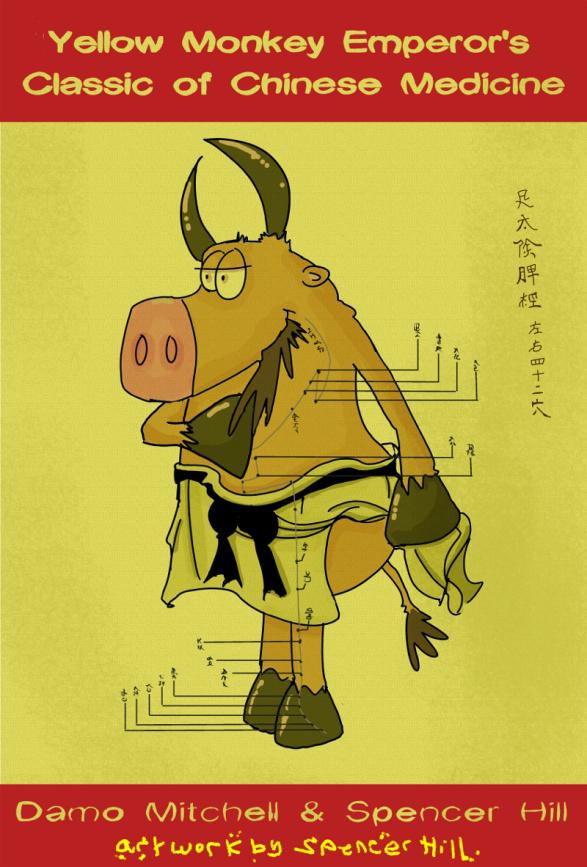 Probably my favourite novel of all time and one which undoubtedly inspired my interest in all things oriental (back in the sixties) was "Monkey” or "Journey to the West” by Wu Cheng’en. Monkey (published in 1592) is considered to be one of the Four Classic Novels of Chinese Literature. It tells the story of a monk’s journey to bring a set of Buddhist Scriptures out of China. The monk ,Tripitaka, is accompanied by a group of unlikely fellow travellers, a wise but mischievous monkey, 8 Precepts Pig, a White Dragon Horse (a descendent of the Dragon king of the Western Seas) and a river ogre (an immortal skilled in the 18 methods of transformation).
Probably my favourite novel of all time and one which undoubtedly inspired my interest in all things oriental (back in the sixties) was "Monkey” or "Journey to the West” by Wu Cheng’en. Monkey (published in 1592) is considered to be one of the Four Classic Novels of Chinese Literature. It tells the story of a monk’s journey to bring a set of Buddhist Scriptures out of China. The monk ,Tripitaka, is accompanied by a group of unlikely fellow travellers, a wise but mischievous monkey, 8 Precepts Pig, a White Dragon Horse (a descendent of the Dragon king of the Western Seas) and a river ogre (an immortal skilled in the 18 methods of transformation).As a TCM practitioner another text which has (of course) inspired me is "The Yellow Emperor’s Classic of Internal Medicine” (Huangdi Neijing – approx 250 B.C.). This is largely a discourse between the Yellow Emperor (Huangdi) and his acupuncturist/advisor Qi Bo.
"Why do people no longer live for more than 100years?”
This question is asked by the Yellow Monkey Emperor when meeting Bee Bo, a wise Bumble Bee, who answers:
"Things were different in ancient times; the animals of the world practised the way of Dao…. In contrast, the youth of today are irresponsible and have stepped away from the natural rhythm of the universe….”
This leads us into an investigation of 78 imbalances in the main Zhang Fu organs, using amusing and colourful cartoon drawings to illustrate what are often difficult syndromes for the average western student to understand such as: "Small Intestine Cold and Deficient "– described in the text as "Banana Cheesecake, Spleen and Stomach Syndrome”.
The drawings in this profound "picture book” have been beautifully crafted by Spencer Hill, a long term student of the Daoist Arts. Who co-ordinated on the development of the idea, the text and the concept with Damo Mitchell, the technical Director of the Lotus Nei Gong School of Daoist Arts and the author of several books.
The Yellow Monkey Emperor’s Classic of Chinese Medicine was published this year by Singing Dragon and printed and bound in China
Book Reviews: Make Your Own Aphrodisiacs, by Julie Bruton-Seal and Matthew Seal
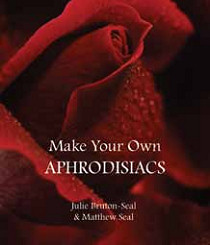 It is amazing how much information has been packed into this little book. It is a masterclass of photography and a truly beautiful piece of visual art, but inside there is so much more. A wealth of knowledge and wisdom gleaned from every corner of our planet is thoroughly reported in a crisp, easy-to-follow format and more fabulous photos illustrate each section.
It is amazing how much information has been packed into this little book. It is a masterclass of photography and a truly beautiful piece of visual art, but inside there is so much more. A wealth of knowledge and wisdom gleaned from every corner of our planet is thoroughly reported in a crisp, easy-to-follow format and more fabulous photos illustrate each section.A Taste of the Unexpected by Mark Diacono
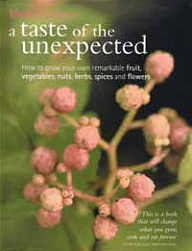 I found this book really inspiring and useful. While I have Martin Crawford’s Creating a Forest Garden, which covers the same plants and many more, this book is helpful because it is entirely based on what tastes good and includes more information on each plant, along with beautiful illustrations and interesting, unusual recipes.
I found this book really inspiring and useful. While I have Martin Crawford’s Creating a Forest Garden, which covers the same plants and many more, this book is helpful because it is entirely based on what tastes good and includes more information on each plant, along with beautiful illustrations and interesting, unusual recipes.Reviewed by Julie Bruton-Seal
Book Review: The Complementary Therapists Guide to Conventional Medicine, by Clare Stephenson
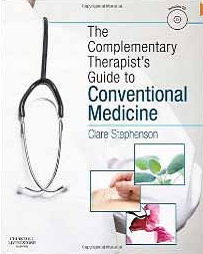 This book was written by a Western medical doctor who then trained with the college of Integrated Chinese Medicine, and subsequently devised a study course for the students of that school – the intention is to bridge the gap between the two styles of medicine, and to build as many connections as possible to facilitate communication between Western and complementary (the term alternative is not used) practitioners. It was written primarily for those who are studying or practising alternative medicine to give them an understanding of conventional medicine. The book is intended either to be purely a reference book, or a complete study course, as it contains frequent helpful self- assessment tests that ensure an understanding of the text. There are also many case studies that help to make it more user-friendly – we are, after all, treating people, not diseases or body systems.The only other book I have come across attempting to do a similar thing is that written by Stephen Gascoigne – The Clinical Medicine Guide: A Holistic Perspective – and Stephenson refers to this on several occasions. Gascoigne’s focus is more on the alternative therapy than conventional, so the two books would complement each other rather well.
This book was written by a Western medical doctor who then trained with the college of Integrated Chinese Medicine, and subsequently devised a study course for the students of that school – the intention is to bridge the gap between the two styles of medicine, and to build as many connections as possible to facilitate communication between Western and complementary (the term alternative is not used) practitioners. It was written primarily for those who are studying or practising alternative medicine to give them an understanding of conventional medicine. The book is intended either to be purely a reference book, or a complete study course, as it contains frequent helpful self- assessment tests that ensure an understanding of the text. There are also many case studies that help to make it more user-friendly – we are, after all, treating people, not diseases or body systems.The only other book I have come across attempting to do a similar thing is that written by Stephen Gascoigne – The Clinical Medicine Guide: A Holistic Perspective – and Stephenson refers to this on several occasions. Gascoigne’s focus is more on the alternative therapy than conventional, so the two books would complement each other rather well. This is far more than just a book about physiology and disease – it describes how a Western conventional doctor decides on diagnosis and treatment, and all the considerations that have to play a role in those decisions. The section on drugs tells how to find information about medication from the British National Formulary and where it is freely available online; there is an interesting section on drug classification, and also on how to help patients withdraw from specific medication.
There are sections on ‘red flag’ conditions, which appear in each chapter relating to disease – these are summarised in the appendix, making this a valuable resource.There is a large section on mental health disorders covering anxiety, depression, eating disorders and psychoses. There are chapters on disease processes, cancer, infectious disease; the anatomy and physiology of all body systems are explained in very readable form, together with their disorders and problems; chapters on children’s health, pregnancy and childbirth follow. The chapter on diseases of the endocrine system is well written as a teaching aid. The explanations of all the various conventional tests are likely to be valuable information about blood tests, investigative tests such as barium swallow, endoscopy, cystoscopy etc. The section on how to communicate with conventional medics is a great idea.
Potentially extremely useful to anyone doing presentations is the fact that all the diagrams and pictures in the book are available to export from the CD.
Although this book is most relevant to those studying or practising Chinese Medicine it has relevance to Western and Ayurvedic herbalists too. An understanding of TCM would make a difference to how much the reader will get out of this book; but it can very easily be primarily used as a study guide or reference in the understanding of conventional Western medicine.
This book would make an excellent text book for anyone studying any alternative therapy and requiring an understanding of the way conventional medicine works. It would also make an excellent anatomy and physiology textbook – so this twin function more than makes up for its lack of breadth from an alternative perspective.
Food, Herbs, Health and Healing
Natural healing methods from around the world to promote well-being.
ISBN: 978-1-60860-653-5
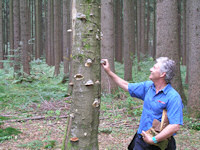 From the author of 100 Herbs of Power, Herbalist John E.Smith takes a look at the use of food and herbs as medicine in different cultures.
From the author of 100 Herbs of Power, Herbalist John E.Smith takes a look at the use of food and herbs as medicine in different cultures.
From the folk medicine traditions of Europe & America to the five-element system of China, you will learn the healing properties of plants and how to safely use ancient remedies for dozens of common ailments.
Food, Herbs, Health & Healing is a practice-proven way to achieve better health, naturally.
John E. Smith, B.A. (Hons) M:URHP,Dip C.H., is a Classical Herbalist, who has worked and studied throughout Europe, the United States, China, India, Australia, the South Pacific and the Middle East. His interest in traditional systems of healing has inspired this multi-cultural approach to herbal medicine.
Publisher's website:
http://strategicpublishinggroup.com/title/FoodHerbsHealthandHealing.html
John E Smith: http://herbalkhemy.com
Recent Reviews:
This book has improved my health – just by reading it. It is a treasure of knowledge on herbs, food and healing practices from cultures all round the world, from ancient to right up to date. The author makes it clear that herbal medicine is not a science – it is a healing art. He successfully assists the reader to view the body as a whole rather than a collection of unrelated parts. Written with warmth and humour this book is based on the author’s practice and passion for herbal medicine traditions and is an excellent follow-up to his previous book 100 Herbs of Power. - Moya Henry: Crescent Arts – Belfast
'Food, Herbs, Health & Healing' by J.E. Smith is the book for those who would like a natural approach to health, healing and beauty.
Combining ancient knowledge with modern facts, easily explained and therefore easy to put into practice. John E Smith outlines a drug free approach to health under the belief that nature is the greatest healer. - Aranza Cobo – Editor 'Back to Nature' Magazine

